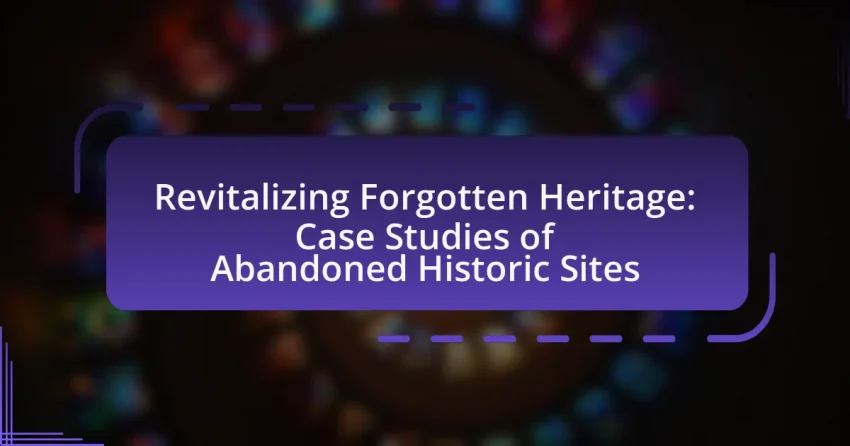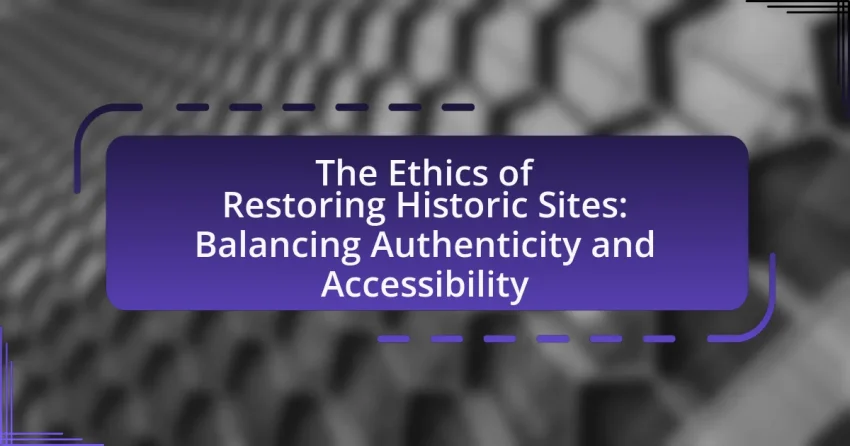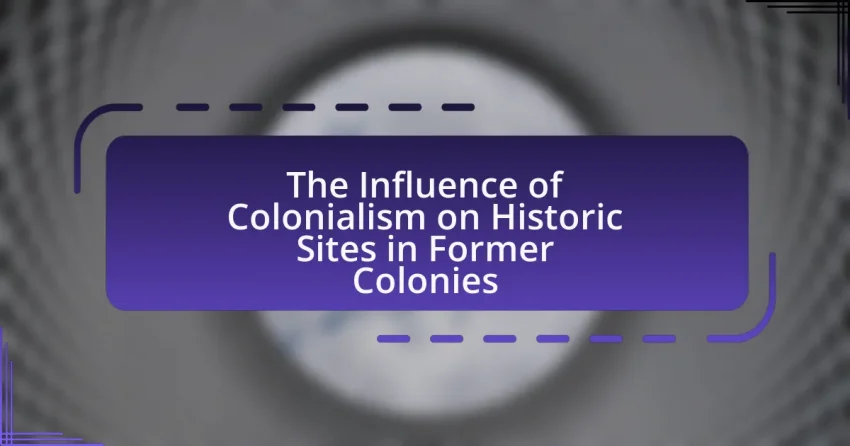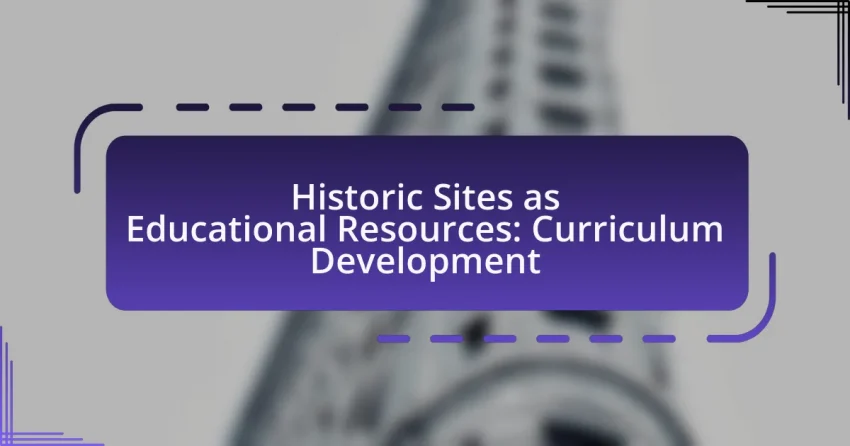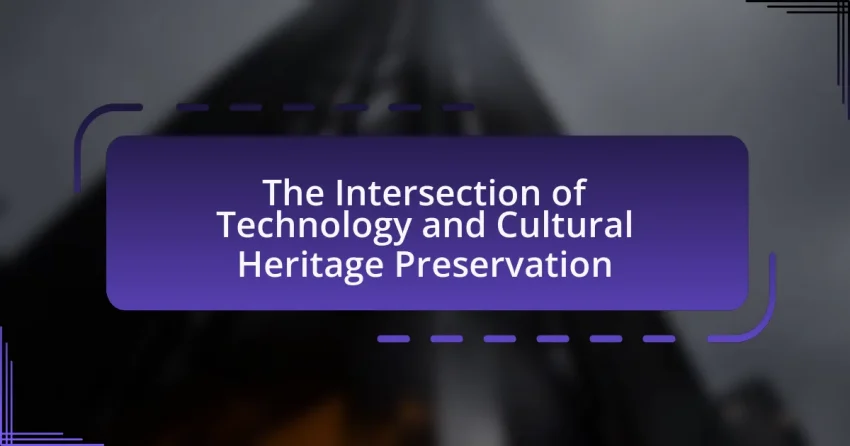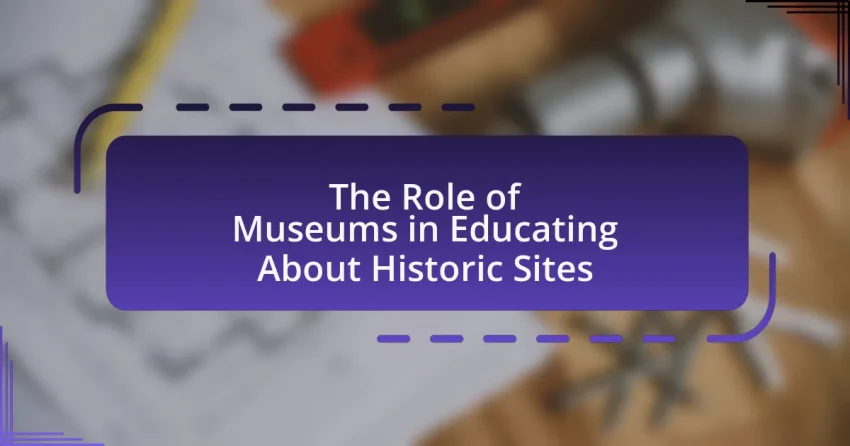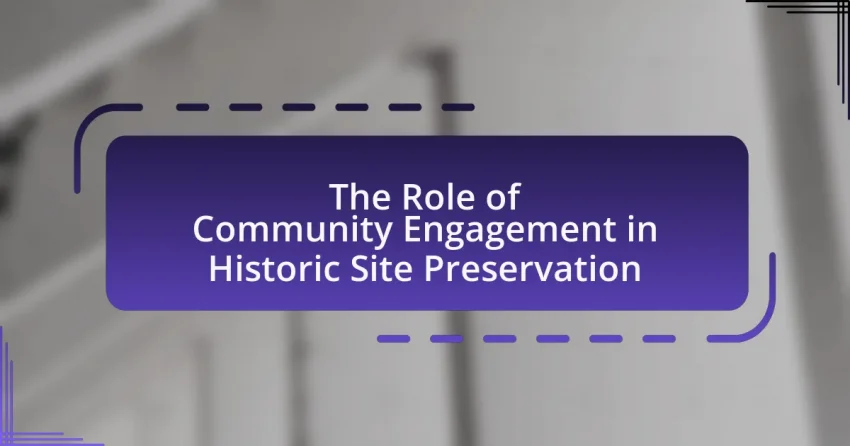Revitalizing Forgotten Heritage focuses on the restoration and repurposing of abandoned historic sites to preserve cultural significance and foster community engagement. The article discusses the importance of revitalizing these sites, highlighting their cultural significance and the negative impacts of neglect on local communities. It examines the challenges faced in restoration efforts, including funding shortages and…
Cultural Heritage
Description could not be generated due to an error.
Preservation Challenges: Balancing Development and Heritage Conservation
The Ethics of Restoring Historic Sites: Balancing Authenticity and Accessibility
The article examines the ethical considerations involved in restoring historic sites, focusing on the balance between authenticity and accessibility. Key topics include the importance of preserving historical integrity, the conflict between maintaining original materials and enhancing public access, and the role of community engagement in restoration projects. It also discusses various restoration approaches, legal frameworks,…
Celebrating Indigenous Heritage: Protecting Sacred Sites
Indigenous heritage encompasses the cultural, historical, and spiritual traditions of Indigenous peoples, playing a crucial role in their identity and community continuity. The article explores the definition and significance of Indigenous heritage, emphasizing the importance of preserving sacred sites, which are vital for cultural identity and environmental stewardship. It discusses the threats these sites face…
The Influence of Colonialism on Historic Sites in Former Colonies
The article examines the influence of colonialism on historic sites in former colonies, highlighting how colonial powers shaped architecture, cultural narratives, and preservation practices. It discusses the architectural styles that emerged from colonial influences, the utilization of historic sites to reinforce colonial dominance, and the lasting impacts on cultural identity and socio-economic disparities. The article…
Historic Sites as Educational Resources: Curriculum Development
Historic sites are locations of historical significance that serve as valuable educational resources, providing experiential learning opportunities that enhance student engagement and understanding of history. This article explores the role of historic sites in education, detailing how they serve as educational resources, the types of sites commonly used, and the importance of curriculum development for…
The Intersection of Technology and Cultural Heritage Preservation
The article examines the intersection of technology and cultural heritage preservation, highlighting how digital tools and methodologies are employed to safeguard and promote cultural assets. It discusses key technologies such as 3D scanning, virtual reality, and digital archiving, which enhance the documentation, restoration, and accessibility of cultural artifacts and sites. The article also addresses the…
Documenting Intangible Heritage: Festivals and Traditions at Historic Sites
Documenting intangible heritage focuses on the systematic recording and preservation of cultural practices, expressions, and traditions that are not physically tangible, such as festivals, rituals, and oral traditions. This article explores the significance of documenting intangible heritage, emphasizing its role in preserving community identity and cultural diversity. Key elements include oral traditions, performing arts, and…
The Role of Museums in Educating About Historic Sites
Museums serve a vital role in educating the public about historic sites through curated exhibits, educational programs, and community collaborations. They enhance understanding of historical contexts by providing access to artifacts and narratives, fostering appreciation for cultural heritage. The article explores how museums utilize interactive exhibits, guided tours, and technology to engage visitors, while also…
The Role of Community Engagement in Historic Site Preservation
Community engagement is a vital component in the preservation of historic sites, fostering local ownership and stewardship of cultural heritage. The article explores how active community involvement enhances preservation efforts through increased advocacy, funding, and volunteer support, leading to sustainable outcomes that reflect community values. Key elements of effective engagement include inclusivity, transparency, collaboration, and…
